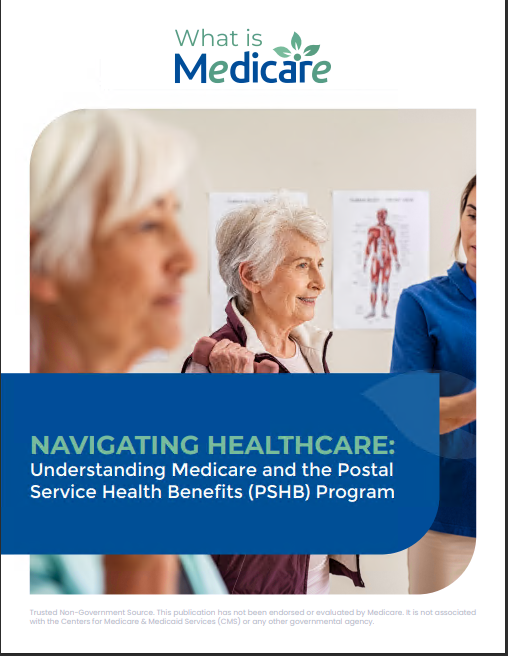Key Takeaways
-
Medicare in 2025 introduces significant updates, including new cost caps and benefit adjustments.
-
Understanding the changes in costs, benefits, and coverage limits can help you make informed decisions during enrollment.
Medicare Basics Refresher
Navigating Medicare can sometimes feel like deciphering a foreign language, but it boils down to a few key components. Medicare is split into several parts:
-
Part A: Covers hospital care, skilled nursing facilities, and some home health services.
-
Part B: Handles outpatient care, doctor visits, and preventive services.
-
Part C (Medicare Advantage): An alternative to Original Medicare that often includes additional benefits.
-
Part D: Focuses on prescription drug coverage.
Each part comes with its own costs, benefits, and limitations. Knowing how these elements work together is critical for choosing the best coverage. Let’s break down what you need to know about these components for 2025.
Updates to Medicare Costs in 2025
Part A: Hospital Coverage Costs
For most people, Part A is premium-free if you’ve paid Medicare taxes for at least 10 years. However, if you’re not eligible for premium-free coverage, here are the 2025 costs:
-
Premiums: $518/month if you have fewer than 30 quarters of coverage, $284/month for 30-39 quarters.
-
Deductible: $1,676 per benefit period.
-
Coinsurance: For hospital stays, you’ll pay $419/day for days 61-90, and $838/day for lifetime reserve days. Skilled nursing facility care costs $209.50/day for days 21-100.
Understanding these costs is essential for planning your budget. You’ll want to account for these potential expenses, especially if you anticipate needing hospital care or skilled nursing services.
Part B: Outpatient Coverage Costs
Part B comes with a standard monthly premium of $185 in 2025. Higher-income earners may pay more due to Income-Related Monthly Adjustment Amounts (IRMAA). The annual deductible for Part B will be $257.
After meeting the deductible, you’ll generally pay 20% of the Medicare-approved amount for most services, such as doctor visits and durable medical equipment. This coinsurance makes supplemental coverage or budgeting for out-of-pocket expenses critical.
Part D: Prescription Drug Coverage Costs
Part D premiums and deductibles vary by plan, but the maximum deductible has increased to $590. The most significant update is the introduction of a $2,000 annual out-of-pocket cap on prescription drugs, providing substantial relief for those with high medication expenses.
This change ensures that even if your prescription needs are extensive, you’ll have predictable and capped expenses. Combined with the new Medicare Prescription Payment Plan, this shift represents a significant improvement in affordability.
Medicare Advantage (Part C)
While costs for Medicare Advantage plans can vary widely, they generally include limits on out-of-pocket expenses. For 2025, these plans continue to emphasize comprehensive benefits and caps on spending, but specific premiums and costs will depend on your chosen plan.
Additionally, more plans are including enhanced benefits that cater to individual health and wellness needs, such as expanded preventive care and home health options. Reviewing these details can help you choose the most suitable plan.
Key Changes in 2025 Benefits
Out-of-Pocket Cap for Prescription Drugs
One of the most notable changes in 2025 is the new out-of-pocket cap for prescription drugs under Part D. Once you spend $2,000 on medications, your plan will cover 100% of further costs for the rest of the year. This eliminates the financial burden previously known as the “donut hole.”
This update is especially impactful for retirees who rely on costly medications. Knowing that your expenses are capped provides peace of mind and better financial predictability.
Medicare Prescription Payment Plan
Another update is the option to spread out-of-pocket drug costs over the calendar year. This feature helps you manage high upfront costs by distributing payments into smaller monthly installments.
It’s an excellent choice for those with fixed incomes, as it allows for more manageable budgeting and avoids the stress of large one-time payments.
Enhanced Medicare Advantage Plans
Medicare Advantage plans continue to expand supplemental benefits like dental, vision, and hearing coverage. Additionally, more plans are expected to include benefits addressing social determinants of health, such as transportation or meal delivery services.
These plans are increasingly personalized, focusing on holistic care that supports your overall well-being. Review plan specifics during enrollment to see which additional benefits align with your needs.
Coverage Limits You Need to Know
Hospital and Skilled Nursing Facility Limits
For Part A, remember that coverage limits apply to hospital and skilled nursing facility stays. After 90 days in the hospital, you must use lifetime reserve days, which are capped at 60 over your lifetime. For skilled nursing facilities, coverage is limited to 100 days per benefit period.
Planning ahead for these limits can help you avoid unexpected out-of-pocket costs. Consider supplemental insurance if you anticipate extended stays.
Part B Service Limits
While Part B doesn’t impose outright caps on services, coverage is subject to medical necessity. For example, physical therapy may require proof that it’s necessary to improve or maintain your health condition.
Understanding these nuances helps you advocate for your coverage and ensures you get the care you need.
Medicare Advantage Coverage Rules
Medicare Advantage plans often have network restrictions. This means you might need to see in-network providers to avoid higher out-of-pocket costs. Be sure to review your plan’s network and authorization requirements for 2025.
Knowing these details ensures you maximize your benefits while minimizing potential disruptions in your care.
Enrollment Periods and Deadlines
Understanding Medicare enrollment periods ensures you don’t miss crucial deadlines:
-
Initial Enrollment Period (IEP): A 7-month window around your 65th birthday to sign up for Medicare.
-
General Enrollment Period (GEP): January 1 to March 31 each year. Coverage begins July 1 for those enrolling during this time.
-
Annual Enrollment Period (AEP): October 15 to December 7, when you can change your Medicare Advantage or Part D plan.
-
Medicare Advantage Open Enrollment Period: January 1 to March 31, for switching or dropping your Medicare Advantage plan.
-
Special Enrollment Periods (SEPs): Triggered by specific life events like losing employer coverage or moving to a new area.
By marking these dates on your calendar and reviewing your options early, you can make confident and timely decisions.
Tips for Choosing the Right Plan
With so many options, picking the right Medicare plan can be overwhelming. Here are a few tips to simplify the process:
-
Assess Your Needs: Think about the services you use most, such as prescription drugs, specialist visits, or routine dental care.
-
Compare Costs: Evaluate premiums, deductibles, and out-of-pocket limits to find a plan that fits your budget.
-
Check Provider Networks: Ensure your preferred doctors and hospitals are in-network if you choose Medicare Advantage.
-
Review Plan Changes Annually: Plans change every year. Use the Annual Notice of Change (ANOC) to review updates to premiums, benefits, and coverage.
-
Seek Assistance: Reach out to SHIP (State Health Insurance Assistance Program) for free, unbiased help.
These steps can save you money, reduce stress, and ensure you have the coverage you need.
Avoiding Common Medicare Mistakes
It’s easy to make missteps when managing your Medicare coverage. Avoid these common pitfalls:
-
Missing Enrollment Deadlines: Late enrollment penalties for Parts B and D can increase your premiums permanently.
-
Overlooking Plan Reviews: Failing to review your plan annually can lead to higher costs or inadequate coverage.
-
Not Coordinating with Other Insurance: If you have other insurance, understand how it works with Medicare to avoid gaps in coverage.
-
Ignoring Medicare Part B Enrollment: If you’re still working, ensure your employer coverage qualifies as creditable to delay Part B without penalties.
Being proactive can save you both money and hassle in the long run.
Preparing for Medicare Open Enrollment
The Annual Enrollment Period (October 15 to December 7) is your chance to make changes for the upcoming year. To prepare:
-
Make a List of Priorities: Identify what matters most, like lower drug costs or additional benefits.
-
Gather Plan Materials: Have your ANOC, current plan details, and any medical expense records handy.
-
Use Online Tools: Medicare’s Plan Finder tool helps you compare options side by side.
-
Act Early: Don’t wait until the last minute to avoid rushed decisions.
Taking these steps ensures you make informed choices that align with your healthcare needs.
Maximizing Your Medicare Benefits
Once you’ve selected a plan, use these strategies to get the most out of your coverage:
-
Schedule Preventive Services: Medicare covers many preventive services at no additional cost, including screenings and vaccines.
-
Review EOB Statements: Explanation of Benefits (EOB) documents help you track what’s covered and identify potential billing errors.
-
Stay In-Network: For Medicare Advantage enrollees, using in-network providers saves money.
-
Take Advantage of Supplemental Benefits: Use dental, vision, and wellness benefits offered by your plan.
These steps will help you make the most of your Medicare coverage year-round.
Make the Most of 2025 Medicare Changes
2025 brings new opportunities to optimize your Medicare coverage. By understanding cost updates, benefits, and coverage limits, you can navigate the system confidently. Stay proactive, review your options, and make the changes that best meet your healthcare needs.










